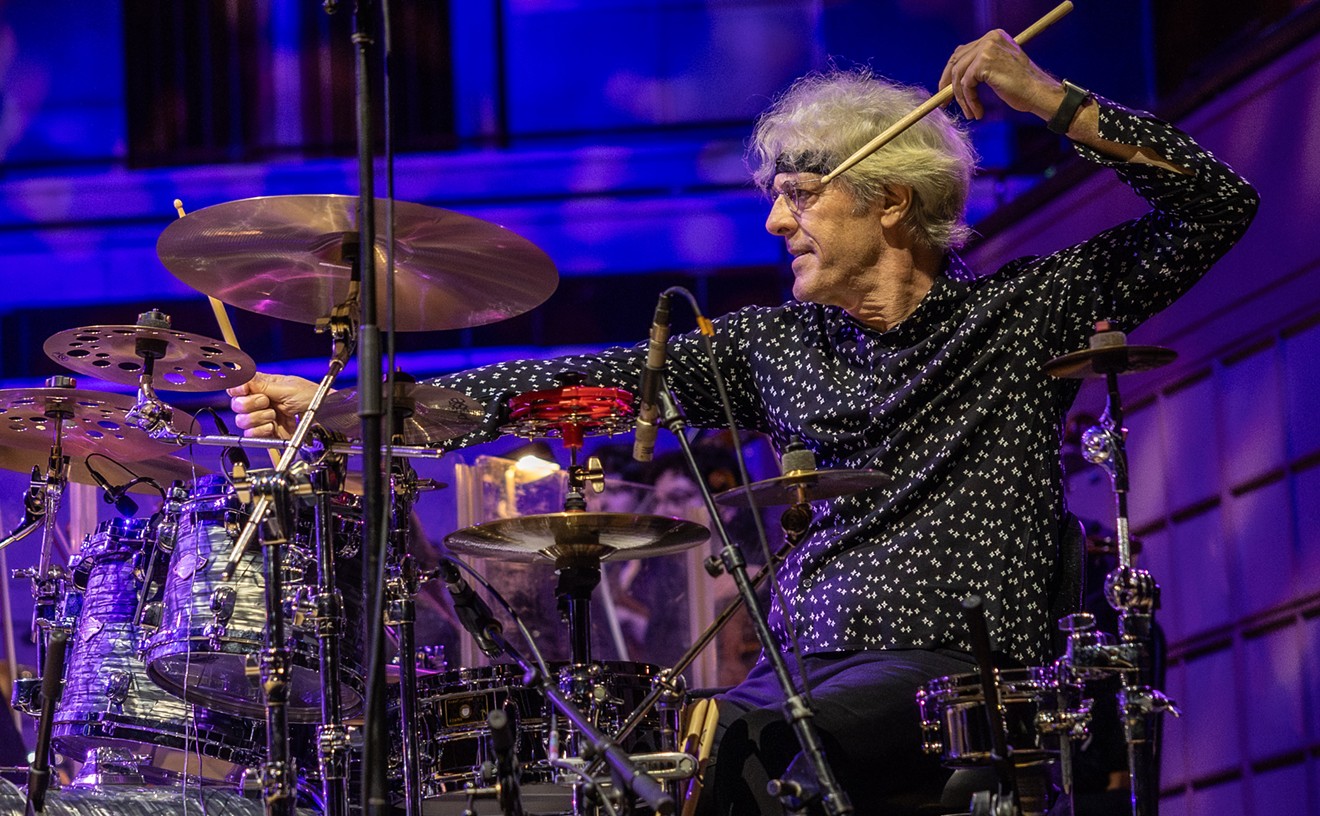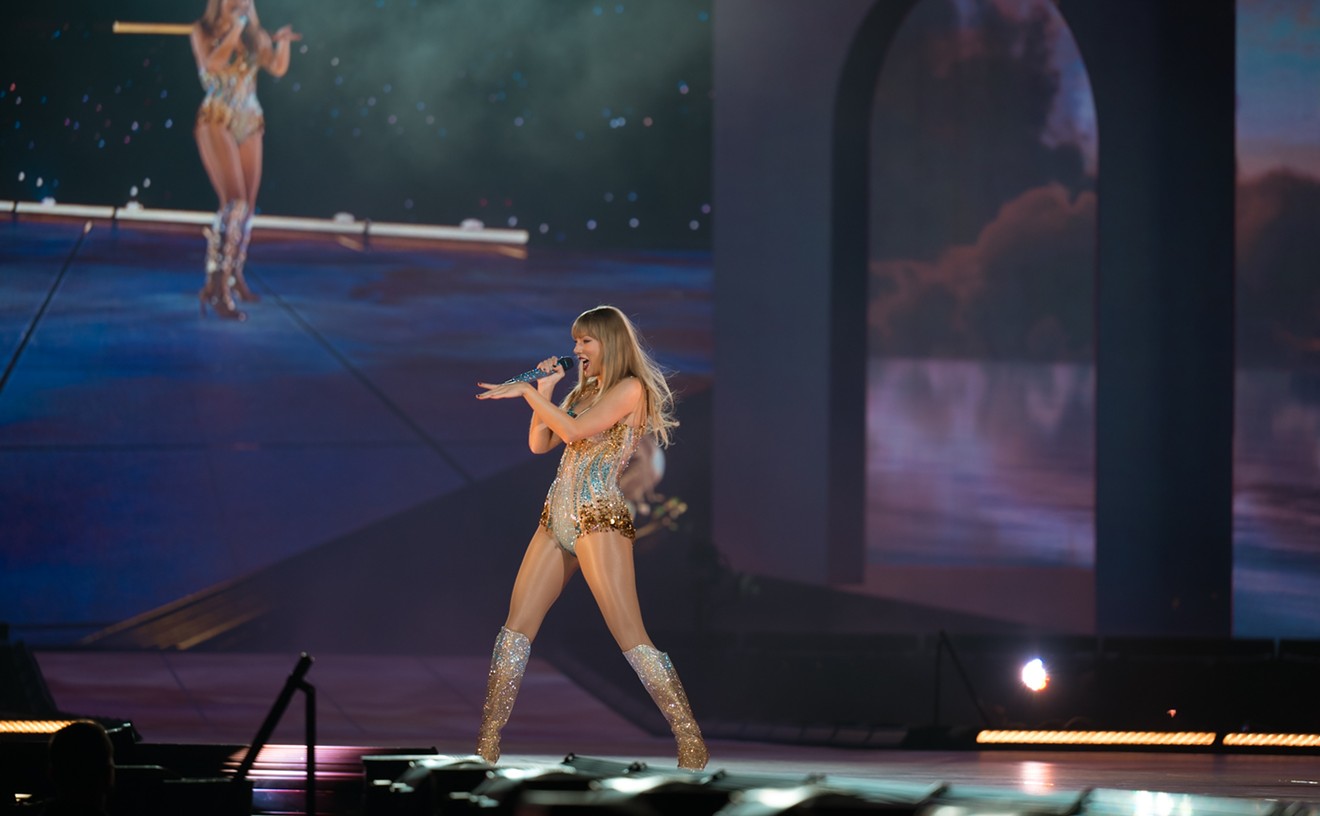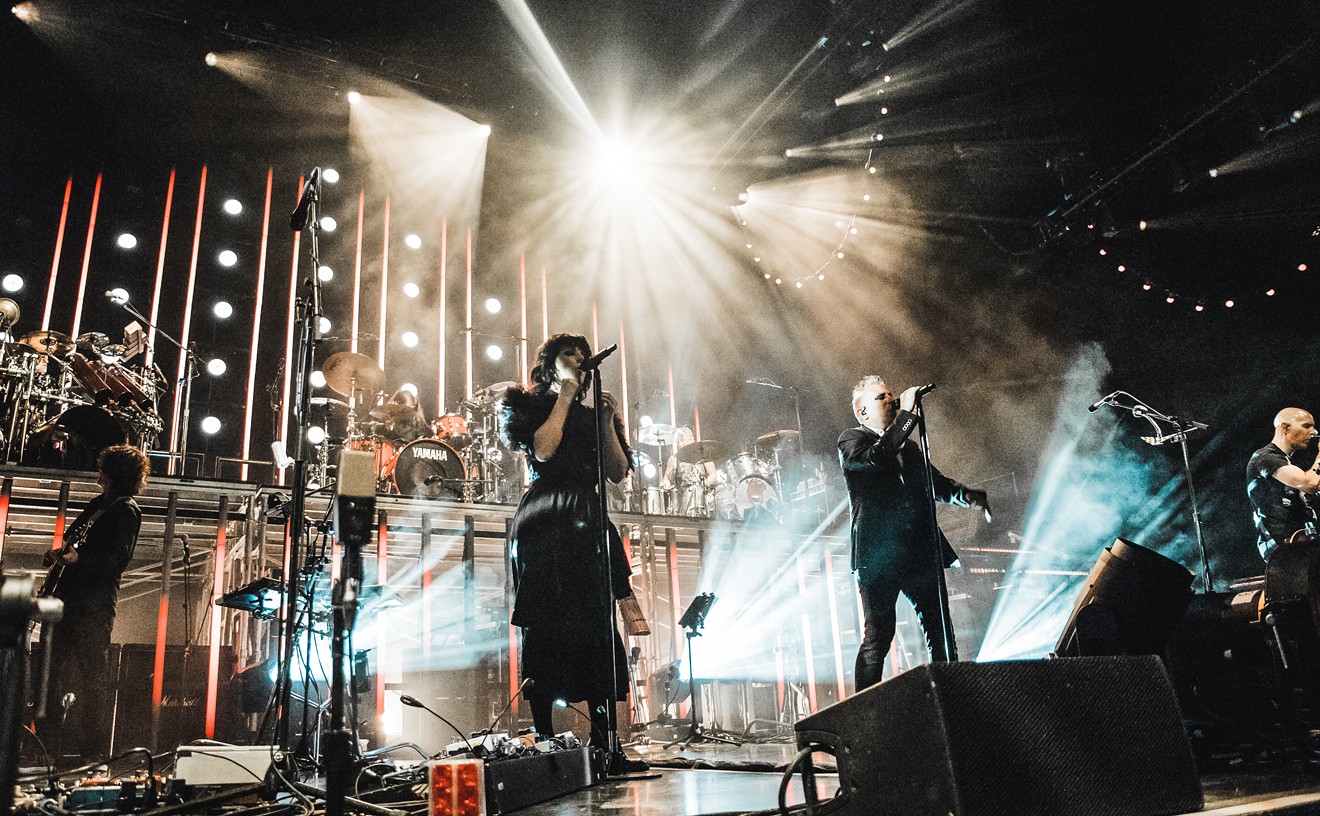Thursday was a big day for KXT 91.7 FM. It was part of a big month, in fact. About 30 people gathered in a small TV studio inside the KERA building as the small Dallas radio station entered new territory. Indiana band Houndmouth was inside to play an in-studio performance, which for the first time KXT would livestream on the new public radio video service VuHaus. Later, Houndmouth would headline KXT's birthday party at Granada Theater, the cap to a month of celebration.
But it hasn't all been good news for the station. Earlier in November — on the day of the station's actual birthday — the website Central Track ran a story breaking down a week's worth of KXT's programming and calling it out for a lack of diversity. The website counted nearly 1,200 songs and found that 70.5 percent were by white male artists. The genres were lopsided in favor of rock and indie rock.
It wasn't the first time KXT was criticized over diversity, and Thursday's festivities didn't do much to counterbalance the claims, either: Between Houndmouth and the opening band for the Granada show, Howard, there was only one female, and all of the musicians were white. But what may be most curious about the situation is that KXT is the only station in Dallas getting called out.
"One thing we pull away from articles like that is we're just fortunate to be in a position where our listeners and the media and the press are that passionate about KXT," says program director Amy Miller. She joined KXT last year as assistant program director, then took over her current role in July after her predecessor, Mark Abuzzahab, left to work at VuHaus in Denver. "I mean, you don't see that type of passion coming out about any other station in Dallas, really."
Miller respects that the article reflects writer Cory Graves' opinion, but she focuses on one particular point that it makes: "I think he hit the nail on the head in the last paragraph. He kind of questions whether maybe this is a bigger issue in the music industry as a whole, and I think he got that completely right," she says. "Anybody who works in the music industry knows that that's a bigger issue, the diversity thing, within the genre of rock music."
"The numbers don't lie," Graves wrote in a story that focused exclusively on KXT's in-house programming, without counting the specialty programming that makes up a healthy portion of its broadcasts. "[Those shows] are there for a reason. That's 58 hours of programming a week that wasn't taken into account, shows like The Latin Alternative and World Cafe and Undercurrents," Miller points out. Also overlooked are the demographics of the station's on-air hosts, four of whom are female. Miller and Gini Mascorro, the only two hosts who are full-time employees of the station, are women.
When KXT launched in November of 2009, it came with high hopes. Dallas would finally have a radio station to save it from the doldrums of commercial mediocrity, one free from the strictures of regimented playlists that would also spotlight local artists. But from the time the station kicked off with Santana's "She's Not There" — a worryingly dad-rock friendly choice — those expectations wavered. Later on, when the playlist was narrowed and bands like Matchbox 20 and Dave Matthews Band turned up in heavy rotation, hashtags like #KXTfail began trending.
Meanwhile, the initial excitement over the local music turned into hand-wringing over who was getting played. There was too much Sarah Jaffe, too much Telegraph Canyon, too much Old 97's — each of whom, at one point or another, wasn't even based in Dallas. More recently, the questions over racial diversity were raised, both with the station's broadcasts and its festivals, like Summer Cut. KXT was an early champion of Leon Bridges, but as an African American artist, he's the exception not the rule.
Jeffrey Liles, artistic director at The Kessler Theater and once the host of his own radio show at KNON 89.3 FM, says those complaints don't put KXT's contributions to local radio in historical perspective. "Before KXT existed, no radio stations other than KNON played local artists at all. At all. Ever," Liles says. "The only time you ever heard it was when a specialized radio show came on on Sunday night in the middle of the night. You just didn't hear any commitment to local artists at all."
Miller admits that KXT is held to a "higher standard," which likely has to do with the alternative that public radio is supposed to be able to offer. "It's kind of tough when people think of public radio because their mindset goes back to those freeform days of radio when stations were kind of playing everything," she says. "But we take a lot of things into account. We are a formatted station, and we love playing local music."
That format is Triple A, Adult Album Alternative, and historically it has been based heavily on rock music, which is of course predominantly male and white. If public radio stations are expected to reflect the demographics of their communities, the AAA format won't be a fair representation of the makeup of Dallas. (It also excludes some of the music scene's most vital music, namely hip-hop.)
"Part of our mission is to represent the community, but again, we're a formatted radio station and when you look at what AAA music is, AAA is now part of the Billboard Top 100. It has its own chart," Miller says. "If you look at the top artists in there, it fits right within those statistics [from the Central Track article] — which maybe that's unfortunate, but it goes back to the whole thing about the music industry as a whole."
Liles is more robust on this point: "Radio has always been pretty stringently racist. Every station has a specific demographic it goes for and that's that," he says. "You don't see a whole lot of cross-pollination of styles on the radio, and particularly in Dallas."
Yet more public radio stations have been straying further away from that format in recent years. St. Paul's The Current in Minnesota and Seattle's KEXP, two of the most popular and well-respected stations in the country, are known for mixing in not only local artists but also hip-hop. KEXP devoted a whole 12-hour special to a breakdown of the Beastie Boys' Paul's Boutique and is a longtime champion of Grammy-winning rapper Macklemore. (OK, both of those artists happen to be white. So, uh, oops.)
As KEXP's station director Tom Mara explains, his station doesn't have a format — and it hasn't since the early 1980s. "There's no playlist at KXP. There's nobody like me going to any of our DJs and saying, 'This is what you're going to play tomorrow.'" He says the rules are kept as simple as possible (including "The Easiest Rule to Follow," which requires that local artists be played every hour). "Half the music the DJs select is newly released and the other half comes from our collection — and when I say 'our collection,' it's more than KXP's collection. The DJs frequently tap into their personal collections."
KEXP is an exceptional case. It has been in operation for more than 40 years, whereas KXT has only had a half-decade to forge its identity and build a fanbase. Just this summer, the city of Seattle contributed $1.9 million to the station's new home inside the publicly owned Seattle Center. Still, Mara sees the rules for public radio shifting in other markets as well. "There's the notion of format but there's also the notion of mission. Format is not mission," he says. "Stations have a particular approach and formats change over time. The AAA format is changing, has changed. And I think that's all really healthy."
Miller, who's still less than six months into her role as program director, leaves the door open to more ambitious changes in the year ahead. KXT is also closing in on hiring a new assistant program director, which should help pave the way to expanding the local content — including the possibility of a stand-alone local show. Unlike The Local Ticket hosted by Mark Schectman on KTCK 96.7 FM (which, you guessed it, tends to default toward white rock bands), it would be solely North Texas (or at least Texas) artists, although plans for such a concept are still a ways off.
She's particularly excited about the opportunities that VuHaus might open up for both KXT and local artists. "It's still very new, but one of our main goals for signing on to that is bringing national awareness to the scene here," Miller says. KEXP is one of a handful of member stations of the still-new website. "There are very few stations on the site, but the stations involved are Philly and Portland and New York and just these major hubs for music," Miller adds. "So to be up there with them is pretty great for us."
In the meantime, Liles isn't second-guessing his support of KXT's programming. "Man, we've been waiting 40 years for a radio station that programmed our artists in the context of national and international artists," he says. "That's a huge, huge win in and of itself."
[
{
"name": "Air - MediumRectangle - Inline Content - Mobile Display Size",
"component": "18855504",
"insertPoint": "2",
"requiredCountToDisplay": "2"
},{
"name": "Editor Picks",
"component": "17105533",
"insertPoint": "4",
"requiredCountToDisplay": "1"
},{
"name": "Inline Links",
"component": "18349797",
"insertPoint": "8th",
"startingPoint": 8,
"requiredCountToDisplay": "7",
"maxInsertions": 25
},{
"name": "Air - MediumRectangle - Combo - Inline Content",
"component": "17105532",
"insertPoint": "8th",
"startingPoint": 8,
"requiredCountToDisplay": "7",
"maxInsertions": 25
},{
"name": "Inline Links",
"component": "18349797",
"insertPoint": "8th",
"startingPoint": 12,
"requiredCountToDisplay": "11",
"maxInsertions": 25
},{
"name": "Air - Leaderboard Tower - Combo - Inline Content",
"component": "17105535",
"insertPoint": "8th",
"startingPoint": 12,
"requiredCountToDisplay": "11",
"maxInsertions": 25
}
]











